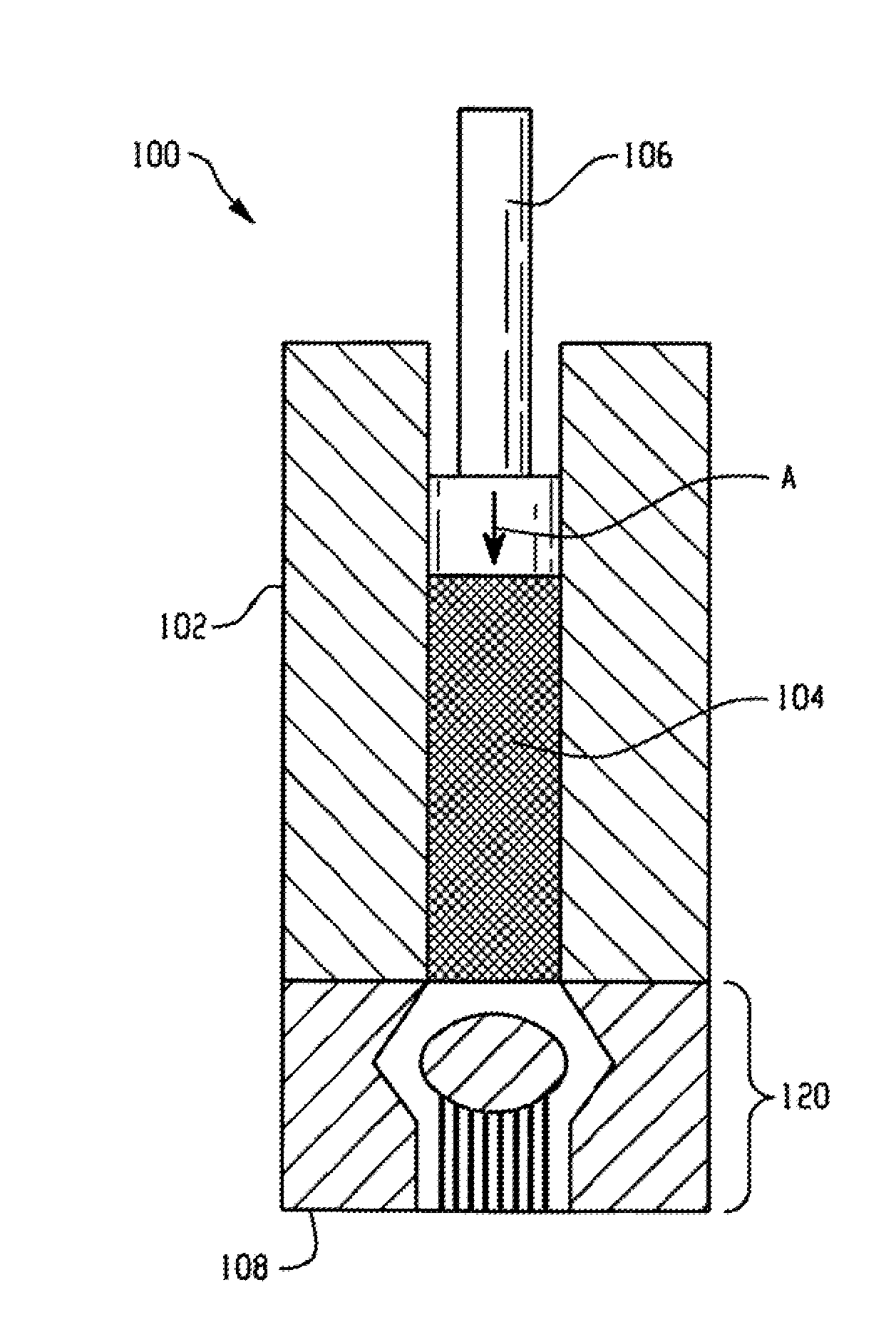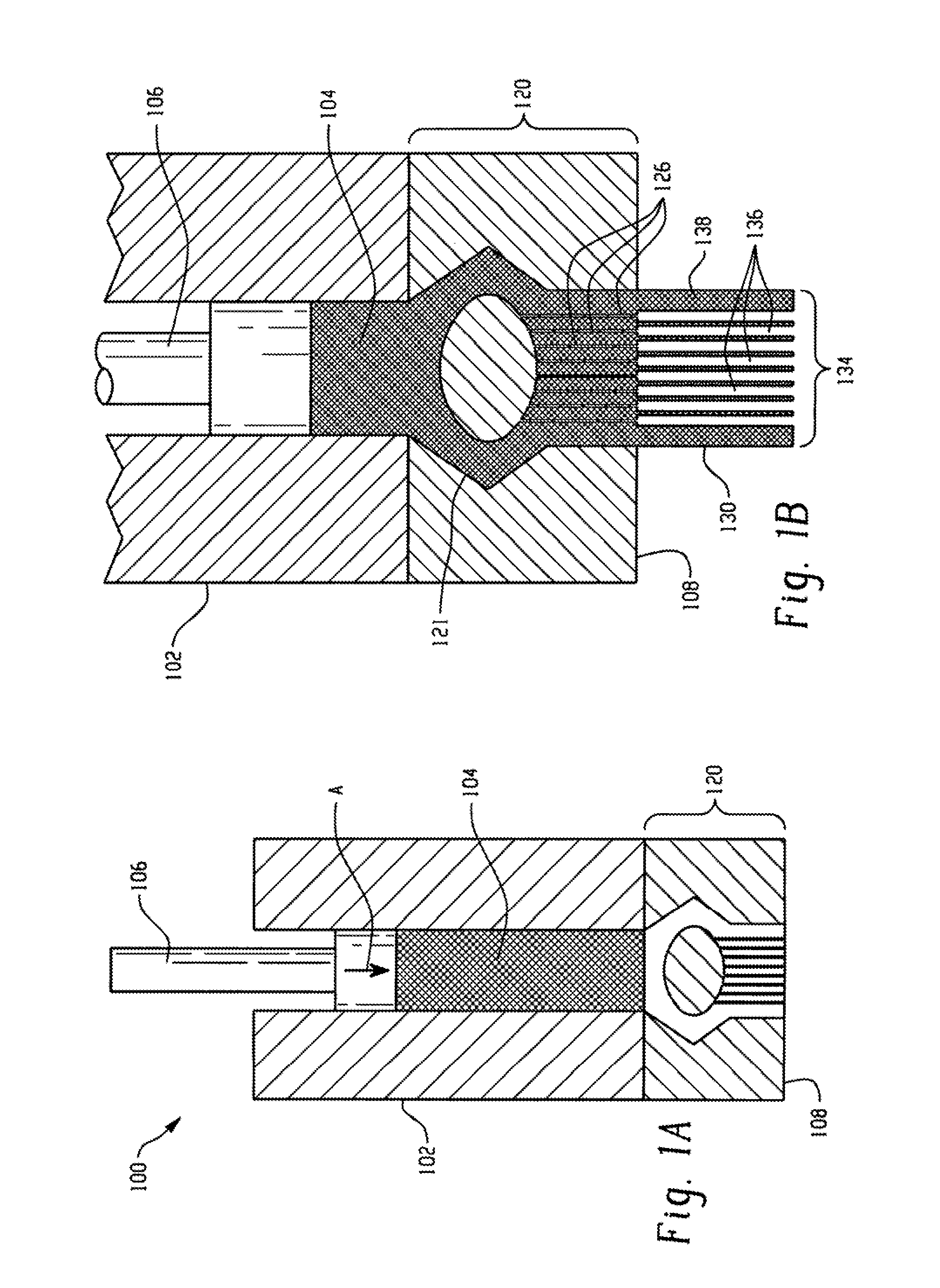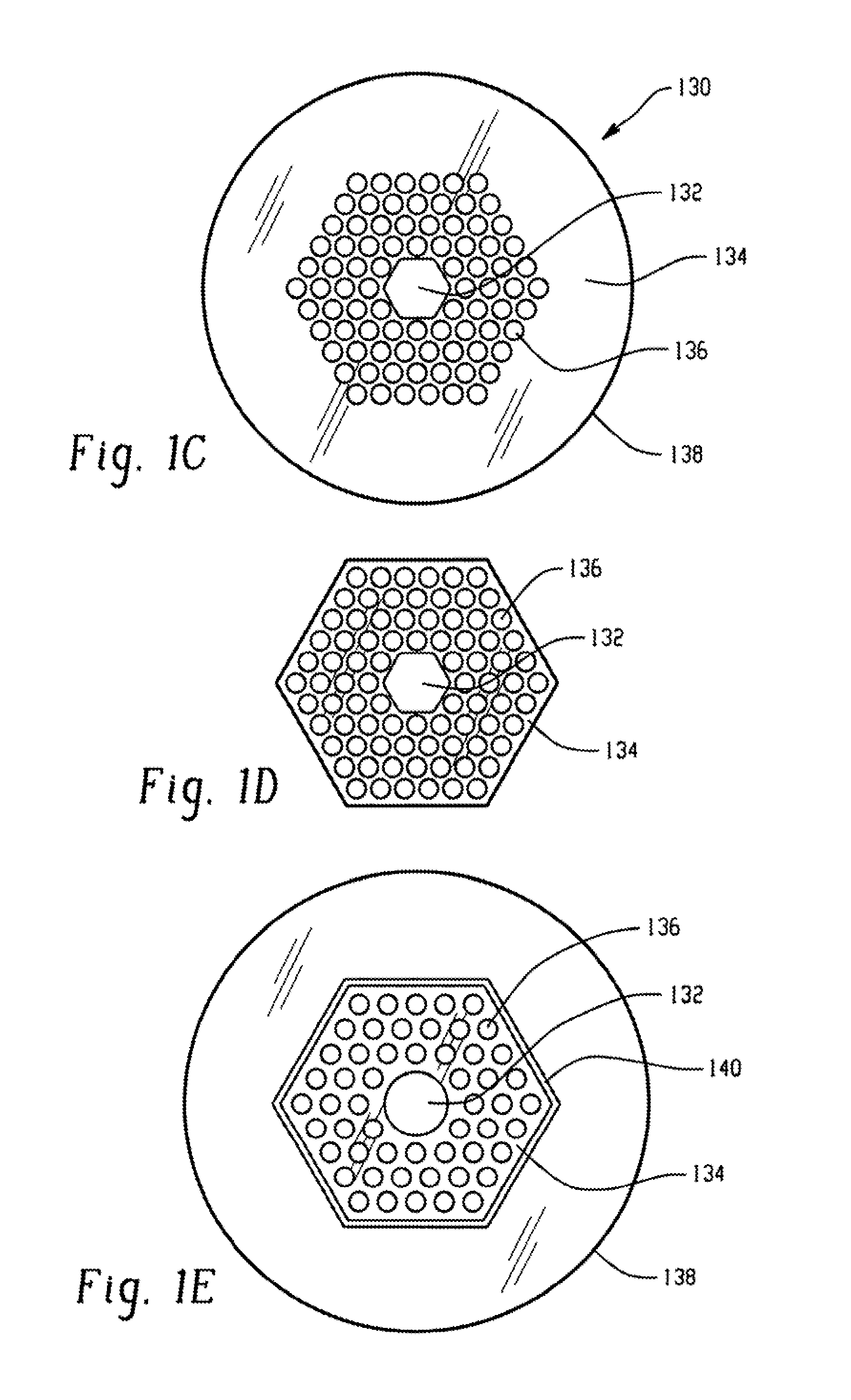Direct extrusion method for the fabrication of photonic band gap (PBG) fibers and fiber preforms
a technology of photonic band gap and extrusion method, which is applied in the direction of manufacturing tools, instruments, cladded optical fibers, etc., can solve the problems of inability to meet the requirements of the production process
- Summary
- Abstract
- Description
- Claims
- Application Information
AI Technical Summary
Benefits of technology
Problems solved by technology
Method used
Image
Examples
Embodiment Construction
[0026]The aspects and features of the present invention summarized above can be embodied in several different forms. The following description shows, by way of illustration, various combinations and configurations in which aspects and features of the invention can be put into practice. It is understood that the aspects, features, and / or embodiments described herein are merely examples, and that one skilled in the art may utilize other aspects, features, and / or embodiments or may make structural and functional modifications without departing from the scope of the present disclosure.
[0027]In describing optical fibers, the term “microstructured” is typically used to describe a structure with features on the micro scale (between approximately 1 μm and 1000 μm) and the term “structured” is typically used to describe features of any scale, including features smaller than, larger than, or the same size as “microstructured” features. In the present disclosure, the term “microstructured” is ...
PUM
| Property | Measurement | Unit |
|---|---|---|
| infra-red wavelengths | aaaaa | aaaaa |
| wavelength | aaaaa | aaaaa |
| viscosity | aaaaa | aaaaa |
Abstract
Description
Claims
Application Information
 Login to View More
Login to View More - R&D
- Intellectual Property
- Life Sciences
- Materials
- Tech Scout
- Unparalleled Data Quality
- Higher Quality Content
- 60% Fewer Hallucinations
Browse by: Latest US Patents, China's latest patents, Technical Efficacy Thesaurus, Application Domain, Technology Topic, Popular Technical Reports.
© 2025 PatSnap. All rights reserved.Legal|Privacy policy|Modern Slavery Act Transparency Statement|Sitemap|About US| Contact US: help@patsnap.com



